The Grand Canyon
11 tribes shared the vast beauty and resources of the Grand Canyon. The Southern Paiute, Hopi, Zuni, Navajo, Apache, Yavapai, Hualapai, and the Havasupai.
Havasupai
The Havasupai or the Havasu Baaja are deemed "People of the Blue Green Waters". This tribe lives just below the rim of the Grand Canyon where above them a limestone aquifer pours down. It is their main source of life, as it provides nourishment for all of their crops and is essential to them agriculturally. The Havasu falls are a frequently visited tourist location for people to hike to but many don't stop to learn about the history of the land.
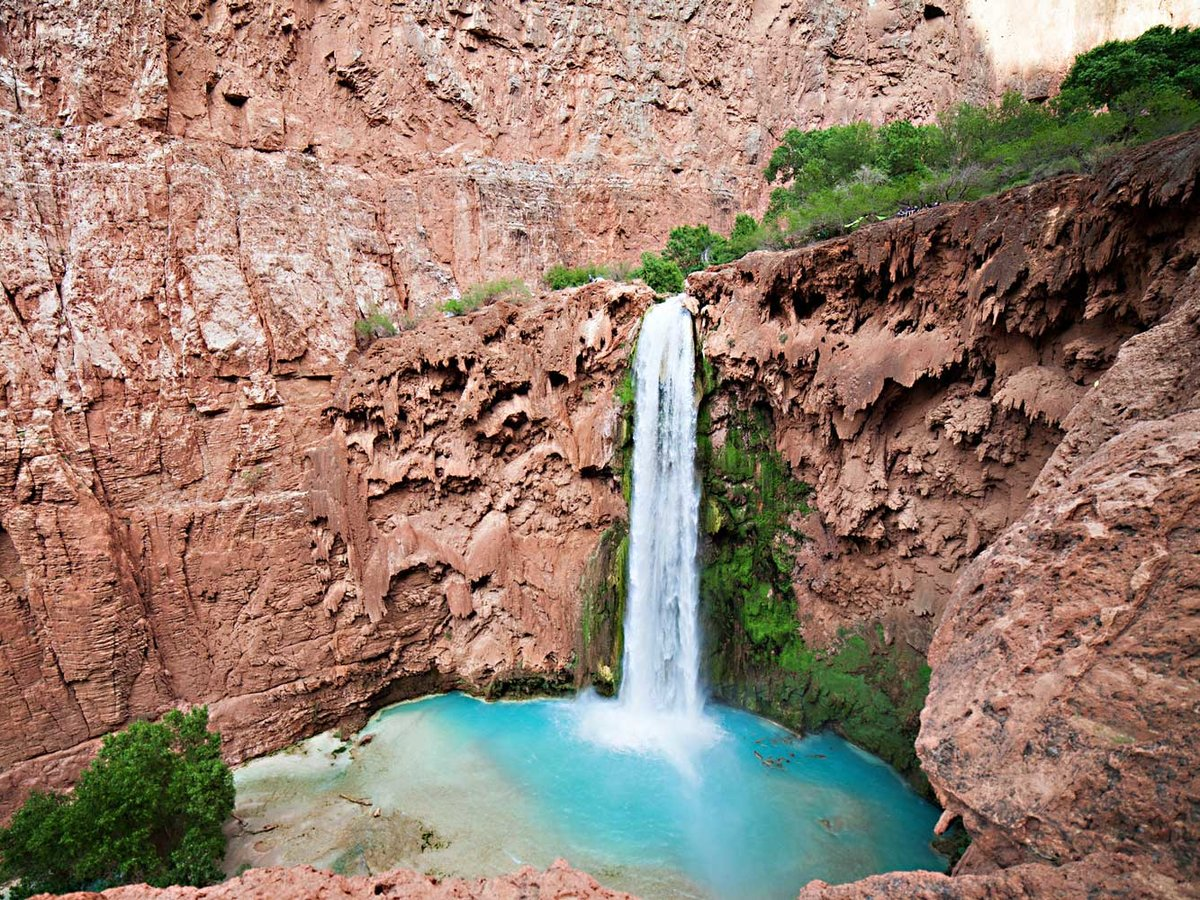
The Havasupai would frequently move along the the layers of the Grand Canyon depending on what season it was. They would harvest corn, bean, squash, melons, and pumpkins from what was called the "Indian Garden" by later Euro-American inhabitants. They were infiltrated during the Manifest Destiny period and by 1901, the Santa Fe Railroad created easy access to the canyon. Theodore Roosevelt began to create the Grand Canyon National Park and forced out the Havasupai families that existed there. 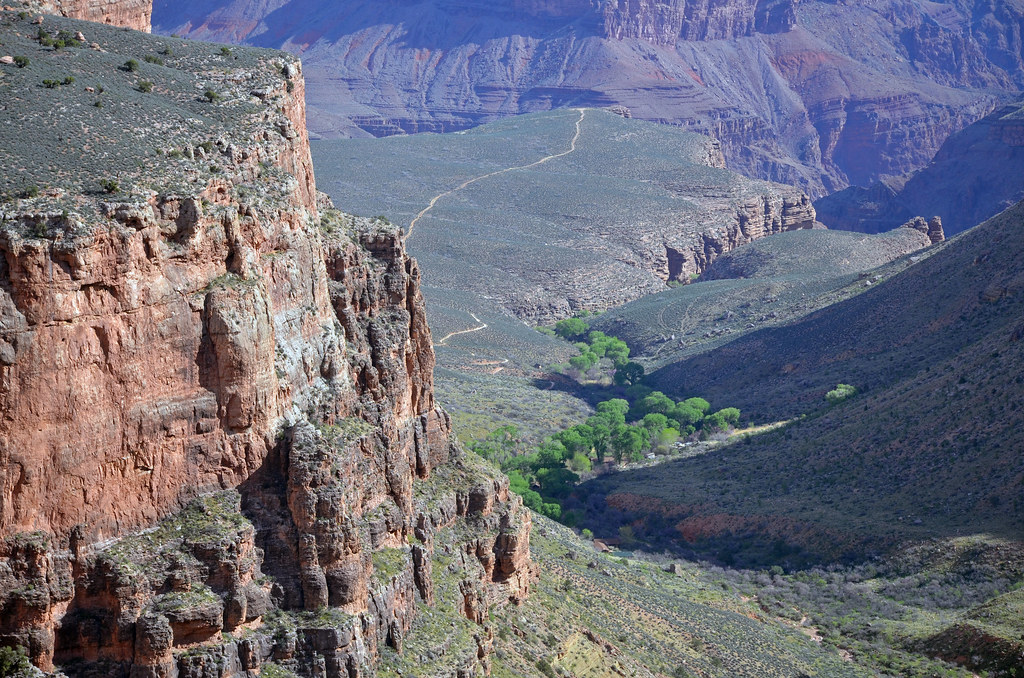
Havasupai Gardens
They were completely cleared from the area by 1928 and were no longer allowed to harvest from the Indian Garden. After being relocated to a reservation in the Havasu Canyon, it wasn't until 1975 where they were allowed 185,000 acres of their territory back. They now majorly depend upon farming and tourism for their income.
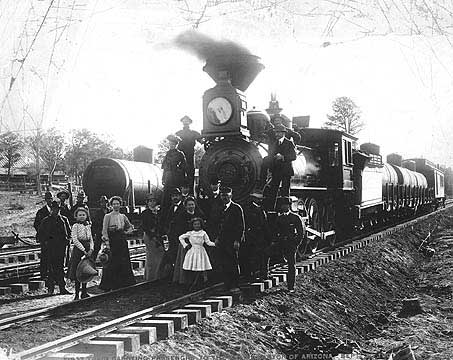
Group picture of first passengers on Grand Canyon railway of September 1901
Hualapai
Hualapai translates into 'People of the Tall Pines" which is confusing considering their geographical position. Their ancestors origin has been traced back to present day Hoover Dam around 600 A.D. The Hualapai Reservation is made up of about one million acres 50 miles west of the Grand Canyon village. They live next to a part of the Colorado River they refer to as "Hakatya" or the "backbone of the river."
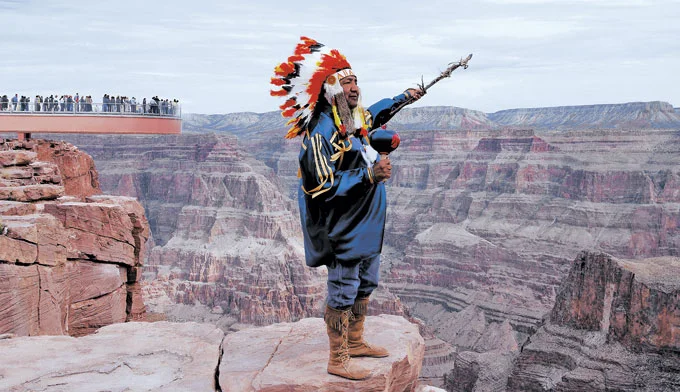
Their eastern border is shared with the Havasupai and it is somewhat difficult to travel there, as the roads are not easily accessible for the public. The Hualapai and Havasupai are technically one major group despite being recognized as separate tribes that live on different reservations. Both tribes have a history of being nomadic farmers and part of the major trade network between other tribes such as the Hopi, Navajo, Utes, Mohave and Paiutes.
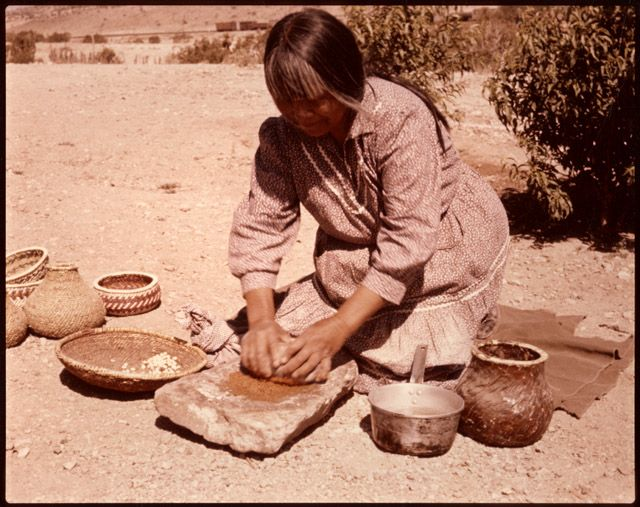
They would trade their harvested goods and the animals they hunted such as antelope, mountain sheep, and other smaller animals. They also traded valuables such as beads, horses or shells in exchange for guns, meat, more horses or blankets. The California gold rush brought in an ambush of miners that depleted and destroyed the Hualapai resources which produced the Hualapai war of 1865. After several years of fleeing, starvation, disease and suffering they were finally given a place of refuge in 1883 in their own reservation.

